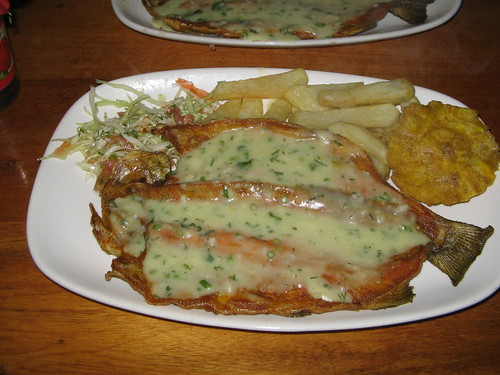QUIJOS CANTON
domingo, 17 de mayo de 2015
Popular celebrations
¨ January 17, Cantonización Quijos
¨ February 12, parochialization of Cuyuja
¨ March 10, parochialization Cosanga
¨ May 14, Spanish Foundation Baeza
¨ May 24, parochialization Borja
¨ September 18, parochialization Sumaco
¨ 20 to 30 November Fiestas de Santa Catalina
¨ November 21 Feast of the Virgin of El Quinche in various parishes of the canton.
¨ Besides the carnival in Baeza and Borja are acudidos by visitors from around the country.
Source : GAD MUNICIPLA DE QUIJOS
Typical food
Trout: This gastronomic attraction is found in all restaurants in Quijos. Trout is the special dish of this sector, it has varied preparations according to the tastes and demands of the customer.
Source: GAD MUNICIPAL DE QUIJOS
Flora and Fauna
Flora
Sigse(Cortadaria sp), romerillo (Hypericum laricifolium), arrayan (Eugenia sp.),paja de páramo (Stipaichu),sixis, achupalla (Puya llamata),pumamaqui (Oreopanax), pega pega (Tristerix longebra), guarumo Cecropia sp.), almohadillas (Llipochaeris sp.), sungo (Saturejanubigena), suro (Arundo donax), aliso (Alnus jorullensis), mora (Rubusglaucus), ashpa chocho (Lupinus tricolor) , chuquiragua (Chuquiraguansignis), yagual (Polylepis incana), Licopodio (Licopodium crassum),genciana (Genciana p), arquitecta (Calcitium reflaxion), Valeriana (microplilia), palma real (Inesa colenda),and others.
Fauna
Puma (Felisconcolor), tigrillo (Felis pardalis), raposa (Didelphis azarae), ciervoenano (Pudu mephistopheles), danta (Tapirus pinchaque), ardilla(Sciurus granatensis), oso de anteojos (Tremarctos ornatus), conejo(Silvilagus brasiliensis), ratones de campo (Phitlotis sp.), lobo (Ducicyonculpaeus), puerco espín (Coendou bicolor), sapos (Atelopus sp.),cervicabra (Mazama Rufina), caracoles (Gasterophodos), venado(Odocoilus virginianus), guanta (cuniculus paca). En cuanto a aves:cóndor (Vulture gryphus), patos de torrentes (Mergameta armata), mirlo(Turdus fruscater), gavilán (Accipiter bicolor), colibrís (Oreotrochilus sp.),gorriones (Zonothichia capensis), Harpia (Harpya harpya), palomas(Columba sp.), pato silvestre (Cairina moschata), pato de páramo (Anaflavirrostris), halcón (Herpetotheres sp.), curiquingue (Phalcoboenuscarunculatus), pilco (Pharomachrus antisianus), pájaro albañil(Campephilus sp), torcaza (Columba fasciata), gallo de peña (Rupicoperiviana) ,tangara paraíso (Tangara chilensis) and others.
Source: GAD MUNICIPAL DE QUIJOS Y ESTACION YANAYACU
Estación Biológica Yanayacu
Las Caucheras
It is in the parish of Cosanga, 25 minutes from Baeza.This place allows direct contact with nature is the perfect place for ornithologists, botanists and conservationists, as the sector offers opportunities to appreciate the biological diversity of the cloud forest.
Source: GAD MUNICIPAL DE QUIJOS
Río Quijos
The Quijos River is located in the canton of the same name, born in the eastern failures Antisana volcano, the importance of this river for kayaking and rafting is so high internationally for its categorization that developed 4+ Cup Amazon in one occasion and a world championship in October 2005.
Suscribirse a:
Comentarios (Atom)




















